Themed collection #MyFirstJMCB

Advancement in total hip implant: a comprehensive review of mechanics and performance parameters across diverse novelties
A projected hip implant with the combination of a collared and FGM porous structure.

J. Mater. Chem. B, 2023,11, 10507-10537
https://doi.org/10.1039/D3TB01469J
Organ bioprinting: progress, challenges and outlook
This review deliberates the current progress in organ bioprinting, including the heart, kidneys, liver, pancreas, and lungs. Challenges and future trends related to the biomanufacturing of living organs are discussed.
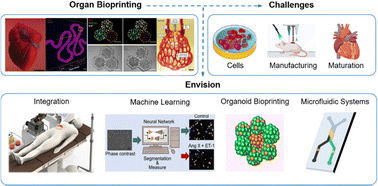
J. Mater. Chem. B, 2023,11, 10263-10287
https://doi.org/10.1039/D3TB01630G
Current emerging novel therapies for Alzheimer's disease and the future prospects of magneto-mechanical force therapy
This article introduces the latest AD treatment techniques from three aspects: drug therapy, biological therapy and physical therapy. Nanoparticle-mediated therapeutics at nanomaterial–neural interfaces and biological systems are described in detail.
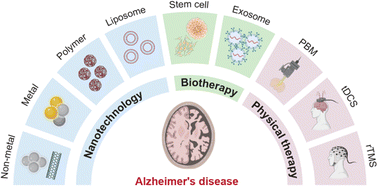
J. Mater. Chem. B, 2023,11, 9404-9418
https://doi.org/10.1039/D3TB01629C
Comprehensive evaluation and advanced modification of polymethylmethacrylate cement in bone tumor treatment
Schematic illustration of the comprehensive evaluation and advanced modification of PMMA cement in bone tumor treatment.

J. Mater. Chem. B, 2023,11, 9369-9385
https://doi.org/10.1039/D3TB01494K
Virus-like particles nanoreactors: from catalysis towards bio-applications
Virus-like particles (VLPs) are self-assembled supramolecular structures in nature for compartmentalization. We summarize the current progress of protein cage nanoreactors spanning multilength scales, and highlight the emerging field of VLP based nanoreactors for biomedical applications.

J. Mater. Chem. B, 2023,11, 9084-9098
https://doi.org/10.1039/D3TB01112G
Intelligent sensing based on active micro/nanomotors
In this review, we delved into an elaborate exposition of different detection principles reliant on micro/nanomotors (MNMs), explore the challenges encountered by MNMs under distinct detection principles, and discuss potential future solutions.
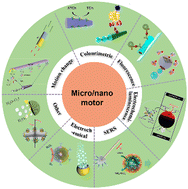
J. Mater. Chem. B, 2023,11, 8897-8915
https://doi.org/10.1039/D3TB01163A
Rational design and engineering of polypeptide/protein vesicles for advanced biological applications
The rational design and engineering strategies, employed in polypeptide/protein vesicles, from synthesis to assembly, for advanced biological and medical applications.
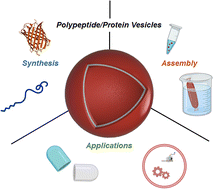
J. Mater. Chem. B, 2023,11, 8834-8847
https://doi.org/10.1039/D3TB01103H
Anti-inflammatory role of gold nanoparticles in the prevention and treatment of Alzheimer's disease
In Alzheimer's disease, AuNPs may reduce neuroinflammation by induction of macrophage polarization, reduction of pro-inflammatory cytokine expression, restraint of leukocyte adhesion, and reduction of oxidative stress.

J. Mater. Chem. B, 2023,11, 8605-8621
https://doi.org/10.1039/D3TB01023F
Functional anti-bone tumor biomaterial scaffold: construction and application
This review summarizes the advances in biomaterial scaffolds with different functionalization strategies for bone tumors. It will provide a valuable reference for bone tumor clinical treatment.
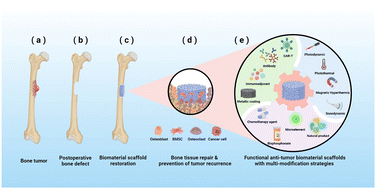
J. Mater. Chem. B, 2023,11, 8565-8585
https://doi.org/10.1039/D3TB00925D
A Trojan horse approach for efficient drug delivery in photodynamic therapy: focus on taxanes
This review discusses unique nanosystems combining taxanes with photosensitizers as multimodal chemo- and phototherapeutics for cancer treatment.

J. Mater. Chem. B, 2023,11, 8622-8638
https://doi.org/10.1039/D2TB02147A
Application of nanotechnology in bladder cancer diagnosis and therapeutic drug delivery
Application of nanomaterials in the diagnosis and treatment of BC.
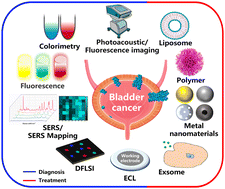
J. Mater. Chem. B, 2023,11, 8368-8386
https://doi.org/10.1039/D3TB01323E
Control of charge transport in electronically active systems towards integrated biomolecular circuits (IbC)
Crafting integrated biomolecular circuits (IbC) via self-assembly of electronically active molecules using a “bottom-up” paradigm provides a potential solution to the technological challenges of the miniaturization of silicon-based electronics.

J. Mater. Chem. B, 2023,11, 8302-8314
https://doi.org/10.1039/D3TB00701D
Nanomaterials: a promising multimodal theranostics platform for thyroid cancer
Thyroid cancer, the most common malignancy in the head and neck region, has shown an increasing incidence trend. With the continuous advancement of nanotechnology, nanomaterials hold great promise in providing diagnosis and treatment of thyroid cancer.
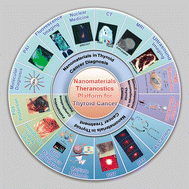
J. Mater. Chem. B, 2023,11, 7544-7566
https://doi.org/10.1039/D3TB01175E
Melanin: insights into structure, analysis, and biological activities for future development
A comprehensive review of melanin's structure, identification methods, and biological activities, highlighting its potential for further development and diverse applications in various fields.

J. Mater. Chem. B, 2023,11, 7528-7543
https://doi.org/10.1039/D3TB01132A
Design and fabrication of intracellular therapeutic cargo delivery systems based on nanomaterials: current status and future perspectives
Intracellular cargo delivery is an important strategy for deciphering cell function, directing cell fate, and reprogramming cell behavior.
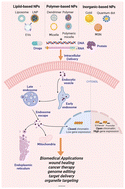
J. Mater. Chem. B, 2023,11, 7873-7912
https://doi.org/10.1039/D3TB01008B
Tuning foreign body response with tailor-engineered nanoscale surface modifications: fundamentals to clinical applications
The synergistic effect of nanotopography and chemistry in modulating different stages of the foreign body response, impacting cell–protein–biomaterial interactions.

J. Mater. Chem. B, 2023,11, 7834-7854
https://doi.org/10.1039/D3TB01040F
Structural polymorphism in protein cages and virus-like particles
There are many native and engineered capsid-forming proteins which can self-assemble into different non-canonical structures. In this review, we categorise examples of structural polymorphism by their method of formation.

J. Mater. Chem. B, 2023,11, 6516-6526
https://doi.org/10.1039/D3TB00991B
Active microfluidic reactor-assisted controlled synthesis of nanoparticles and related potential biomedical applications
Fabricating high-performance nanoparticles (NPs) is currently a focus of researchers due to their manipulative size-dependent unique properties required to develop next-generation advanced systems.
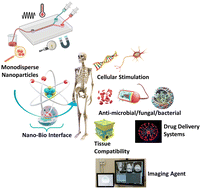
J. Mater. Chem. B, 2023,11, 5650-5667
https://doi.org/10.1039/D3TB00057E
The role of nanochitin in biologically-active matrices for tissue engineering-where do we stand?
Our regard to the use of chitin as a material has drastically changed since its discovery.
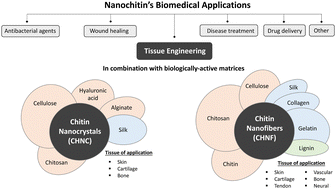
J. Mater. Chem. B, 2023,11, 5630-5649
https://doi.org/10.1039/D3TB00583F
Commercial and novel anticoagulant ECMO coatings: a review
To address the problem of thrombosis, anticoagulant coatings have been developed for extracorporeal membrane oxygenation circuits. This article reviews commercial and novel anticoagulant coatings recently and proposes a new classification of them.

J. Mater. Chem. B, 2023,11, 4832-4841
https://doi.org/10.1039/D3TB00471F
mRNA therapeutics for disease therapy: principles, delivery, and clinical translation
This review provides an overview of the latest research progress in mRNA structural optimization strategies and their delivery systems, and discusses key considerations for their future clinical use.

J. Mater. Chem. B, 2023,11, 3484-3510
https://doi.org/10.1039/D2TB02782H
Synthesis and thermomechanical properties of bioplastics and biocomposites: a systematic review
Materials research relating to bio-based polymers and composites has become the order of the day and several types of research are being undertaken on these materials.

J. Mater. Chem. B, 2023,11, 3307-3337
https://doi.org/10.1039/D2TB02221D
Nanoscale MOFs in nanomedicine applications: from drug delivery to therapeutic agents
Metal–organic frameworks (MOFs) hold great promise for widespread applications in biomedicine and nanomedicine.

J. Mater. Chem. B, 2023,11, 3273-3294
https://doi.org/10.1039/D3TB00027C
Recent progress in the development of small-molecule fluorescent probes for detection and imaging of selenocysteine and application in thyroid disease diagnosis
Selenocysteine (SeCys) is the 21st genetically encoded amino acid present in proteins and is involved in various biological functions.
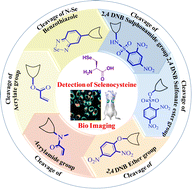
J. Mater. Chem. B, 2023,11, 2614-2630
https://doi.org/10.1039/D3TB00035D
Recent advancements in design of nucleic acid nanocarriers for controlled drug delivery
This paper reviews the essential properties of nucleic acid nanocarriers and modern additions to the field which have pushed the boundaries of nucleic acid usage.

J. Mater. Chem. B, 2023,11, 2078-2094
https://doi.org/10.1039/D2TB02325C
Hydrogels with electrically conductive nanomaterials for biomedical applications
Hydrogels with electrically conductive nanomaterials find numerous biomedical applications where conductivity is relevant, such as substrates for tissue engineering of electroactive cells, strain-sensitive sensors and platforms for drug delivery.
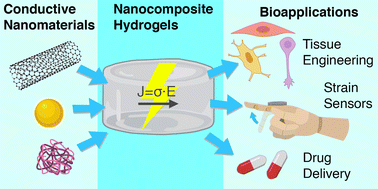
J. Mater. Chem. B, 2023,11, 2036-2062
https://doi.org/10.1039/D2TB02019J
Engineering metabolic cycle-inspired hydrogels with enzyme-fueled programmable transient volume changes
The development of hydrogels that can exhibit a transient response, fueled by enzymes, while also depleting the enzymatic activity of fuel, holds immense potential for sophisticated materials capable of dynamically intervening in biological events.
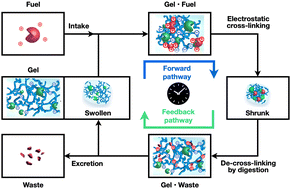
J. Mater. Chem. B, 2023,11, 8136-8141
https://doi.org/10.1039/D3TB00638G
Complementary charge-driven encapsulation of functional protein by engineered protein cages in cellulo
This study provides proof of charge complementarity-based inclusion complex formation between an engineered protein nanocage and an otherwise degradation-prone cargo protein in live bacterial cells.

J. Mater. Chem. B, 2023,11, 6540-6546
https://doi.org/10.1039/D3TB00754E
PEGylation of a shell over core–shell MOFs—a novel strategy for preventing agglomeration and synergism in terms of physicochemical and biological properties
A new strategy of PEGylation over core–shell MOFs of HKUST-1 and Cu-MOF-2 by a solvothermal method.

J. Mater. Chem. B, 2023,11, 10665-10677
https://doi.org/10.1039/D3TB01125A
Engineered elastin-like polypeptide-based hydrogel delivering chemotherapeutics and PD-L1 antibodies for potentiated cancer immunotherapy
ELP hydrogels for co-delivery of aPD-L1 and GEM induced a robust antitumor immune response for potentiated immunotherapy.

J. Mater. Chem. B, 2023,11, 10355-10361
https://doi.org/10.1039/D3TB01974H
Exploring the potential of iron-based metal–organic frameworks as peroxidase nanozymes for glucose detection with various secondary building units
This study investigated different secondary building units of iron-based metal–organic frameworks and discovered that when combined with an enzyme-encapsulating ZIF-90 PVP MOF, they could be sequentially employed for glucose detection purposes.

J. Mater. Chem. B, 2023,11, 10362-10368
https://doi.org/10.1039/D3TB00981E
Carbohydrate–protein interaction-based detection of pathogenic bacteria using a biodegradable self-powered biosensor
A biodegradable self-powered bacterial sensor made of carbohydrate protein interaction. The sensor offers a simple design and capable for rapid and effective detection of E. coli bacteria.
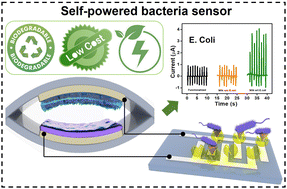
J. Mater. Chem. B, 2023,11, 10147-10157
https://doi.org/10.1039/D3TB01820B
Functional mimicry of sea urchin biomineralization proteins with CaCO3-binding peptides selected by phage display
The study demonstrates how bioinspired peptides, selected via phage display, mimic sea urchin proteins, influencing the formation of CaCO3 crystals. Charged peptides play a crucial role in shaping these crystals.

J. Mater. Chem. B, 2023,11, 10174-10188
https://doi.org/10.1039/D3TB01584J
Fast detection of Staphylococcus aureus using thiol-functionalized WS2 quantum dots and Bi2O2Se nanosheets hybrid through a fluorescence recovery mechanism
Ultrafast and sensitive detection of Staphylococcus aureus, a harmful Gram-positive human pathogenic bacterium, by two-dimensional layered materials continues to be a challenge. Here we present an ultrafast and selective detection of S. aureus bacterium using strong fluorescence emission of WS2 QDs.
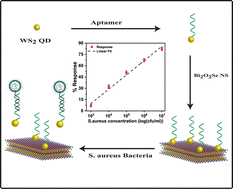
J. Mater. Chem. B, 2023,11, 10206-10217
https://doi.org/10.1039/D3TB01465G
Design and fabrication of biomimicking radially graded scaffolds via digital light processing 3D printing for bone regeneration
Four types of biomimicking radially graded scaffolds were designed and fabricated via digital light processing 3D printing. Graded gyroid–gyroid scaffolds exhibited better dimensional accuracy, compressive property, and cell proliferation rate.
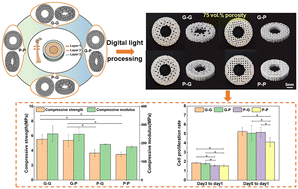
J. Mater. Chem. B, 2023,11, 9961-9974
https://doi.org/10.1039/D3TB01573D
Biotin-decorated hollow gold nanoshells for dual-modal imaging-guided NIR-II photothermal and radiosensitizing therapy toward breast cancer
The novel structure of the hollow gold shell has an ideal X-ray deposition capacity, which ensures the sensitizing effect of radiotherapy. The immunogenic cell death pathway is activated by NIR-II photothermal therapy in conjunction with radiotherapy.
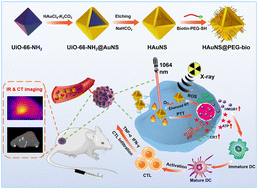
J. Mater. Chem. B, 2023,11, 10003-10018
https://doi.org/10.1039/D3TB01736B
Facile one-pot multicomponent synthesis of peptoid based gelators as novel scaffolds for drug incorporation and pH-sensitive release
Highly efficient, biocompatible low molecular mass organo/hydrogelators were designed and synthesized by one-pot Ugi multicomponent reactions as potential drug delivery carriers for metronidazole.

J. Mater. Chem. B, 2023,11, 9975-9986
https://doi.org/10.1039/D3TB01527K
Validation of transparent and flexible neural implants for simultaneous electrophysiology, functional imaging, and optogenetics
We developed and compared transparent micro electrocorticography arrays (μECoGs) to combine electrophysiology and functional imaging. PEDOT:PSS-based μECoGs had the best trade-off of material and physical properties for chronic in vivo experiments.

J. Mater. Chem. B, 2023,11, 9639-9657
https://doi.org/10.1039/D3TB01191G
Engineering in vitro models of cystic fibrosis lung disease using neutrophil extracellular trap inspired biomaterials
The release and accumulation of neutrophil extracellular traps (NETs) in the airway mucus barrier is prominent in cystic fibrosis. New biomaterial-based models are developed that mimic important aspects of NET-mediated pathobiology in cystic fibrosis.
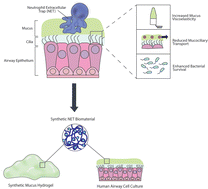
J. Mater. Chem. B, 2023,11, 9419-9430
https://doi.org/10.1039/D3TB01489D
Asymmetric fabrication and in vivo evaluation of the wound healing potency of electrospun biomimetic nanofibrous scaffolds based on collagen crosslinked modified-chitosan and graphene oxide quantum dot nanocomposites
Electrospun biomimetic scaffolds and their potency in in vivo wound healing.

J. Mater. Chem. B, 2023,11, 9478-9495
https://doi.org/10.1039/D3TB00619K
Fabrication of 3D printed PCL/PEG artificial bile ducts as supportive scaffolds to promote regeneration of extrahepatic bile ducts in a canine biliary defect model
Schematic representation of 3D Printed PCL/PEG artificial bile duct fabrication and in vivo promotion of biliary regeneration.
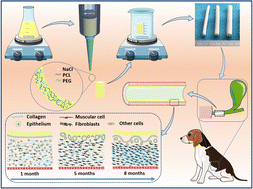
J. Mater. Chem. B, 2023,11, 9443-9458
https://doi.org/10.1039/D3TB01250F
Exploring release mechanisms by disrupting π–π stacking regions in stable micelles
π–π stacking strategies can enhance the stability performance of delivery platforms but are often led to incomplete drug release performance, even with the help of crosslinking strategies. A collaborated strategy is proposed to improve drug release.
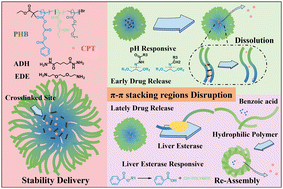
J. Mater. Chem. B, 2023,11, 9246-9259
https://doi.org/10.1039/D3TB01388J
Iron-chelated semiconducting oligomer nanoparticles for NIR-II fluorescence imaging-guided enhanced chemodynamic/photothermal combination therapy
A dihydroartemisinin (DHA)-loaded semiconducting oligomer nanoparticle is designed for NIR-II fluorescence imaging-guided enhanced chemodynamic/photothermal combination therapy.

J. Mater. Chem. B, 2023,11, 9290-9299
https://doi.org/10.1039/D3TB01305G
Photoactivated plasmonic nanohybrid fibers with prolonged trapping of excited charge carriers for SERS analysis of biomolecules
Pre-activation of SERS plasmonic substrate with UV light leads to the creation of long-lived charged states resulting in better attachment of proteins and an increase in the SERS chemical enhancement.
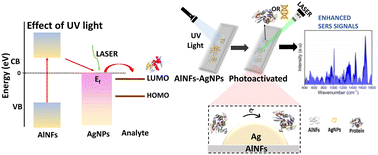
J. Mater. Chem. B, 2023,11, 9212-9222
https://doi.org/10.1039/D3TB00980G
The dynamic therapeutic effect of a targeted photothermal nanovaccine incorporating toll-like receptor 7 agonist enhanced cancer immunotherapy
Photothermal therapy (PTT) is a noninvasive and effective thermal therapeutic approach.

J. Mater. Chem. B, 2023,11, 9005-9018
https://doi.org/10.1039/D3TB01345F
Acyclic cucurbit[n]uril-based nanosponges significantly enhance the photodynamic therapeutic efficacy of temoporfin in vitro and in vivo
Acyclic cucurbit[n]uril-based nanosponges could efficiently deliver temoporfin to cancer cells and enhance its efficacy in vivo.
![Graphical abstract: Acyclic cucurbit[n]uril-based nanosponges significantly enhance the photodynamic therapeutic efficacy of temoporfin in vitro and in vivo](/en/Image/Get?imageInfo.ImageType=GA&imageInfo.ImageIdentifier.ManuscriptID=D3TB01422C&imageInfo.ImageIdentifier.Year=2023)
J. Mater. Chem. B, 2023,11, 9027-9034
https://doi.org/10.1039/D3TB01422C
Fluorogenic response from DNA templated micrometer range self-assembled gold nanorod
Plasmonic hotspots and FRET induced fluorescence enhancement from fluorophore tagged flexible linear 1D ETE assembly of more than 100 gold nanorods has been achieved by DNA templated chemistry with amine modified probe DNAs.
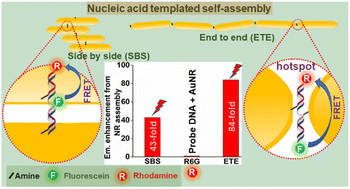
J. Mater. Chem. B, 2023,11, 9019-9026
https://doi.org/10.1039/D3TB01446K
Design of aggregation-induced emission-active fluorogen-based nanoparticles for imaging and scavenging Alzheimer's β-amyloid by photo-oxygenation
Novel photo-oxidant nanoparticles (T-LD NPs) showed effective near-infrared fluorescence imaging of β amyloid (Aβ), and potent inhibition of Aβ fibrillation and fast disaggregation of mature Aβ fibrils by photo-oxygenation under laser irradiation.
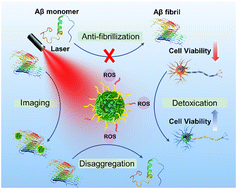
J. Mater. Chem. B, 2023,11, 8994-9004
https://doi.org/10.1039/D3TB01134H
Fe(III)-incorporated porphyrin-based conjugated organic polymer as a peroxidase mimic for the sensitive determination of glucose and H2O2
An Fe(III)-incorporated porphyrin-based conjugated organic polymer is reported as a nanozyme for the efficient detection of glucose via intrinsic peroxidase activity and amperometric detection of H2O2.
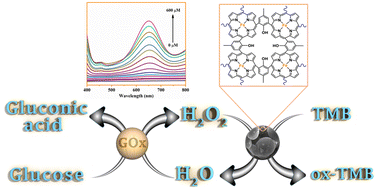
J. Mater. Chem. B, 2023,11, 8956-8965
https://doi.org/10.1039/D3TB00977G
Dual enzyme-mimicking carbon dots for enhanced antibacterial activity
Carbon dot (CD)-based nanozymes have great potential in antibacterial applications through the design of the structure.

J. Mater. Chem. B, 2023,11, 8916-8925
https://doi.org/10.1039/D3TB01376F
Fabrication of three-lobed magnetic microrobots for cell transportation
We present a bench-top colloidal approach for fabricating three-lobed magnetic microrobots. These microrobots showed promising results for single-cell transportation in a fluid.

J. Mater. Chem. B, 2023,11, 8926-8932
https://doi.org/10.1039/D3TB00613A
In vitro evaluation of granules obtained from 3D sphene scaffolds and bovine bone grafts: chemical and biological assays
Granules obtained from 3D sphene scaffolds present similar biological response to natural bone in vitro.

J. Mater. Chem. B, 2023,11, 8775-8787
https://doi.org/10.1039/D3TB00499F
Bioinspired mechanically stable all-polysaccharide based scaffold for photosynthetic production
We demonstrate the construction of hydrogel scaffolds for photosynthetic ethylene production using a bioinspired design combining TEMPO-oxidized cellulose nanofibers (TCNF) and a cereal plant hemicellulose called mixed-linkage glucan (MLG).

J. Mater. Chem. B, 2023,11, 8788-8803
https://doi.org/10.1039/D3TB00919J
A novel PEC and ECL bifunctional aptasensor based on V2CTx MXene-derived MOF embedded with silver nanoparticles for selectively aptasensing miRNA-126
A novel PEC and ECL bifunctional biosensor for the sensitive and selective detection of miRNA-126 based on the AgNPs@V-PMOF Schottky heterojunction was constructed.
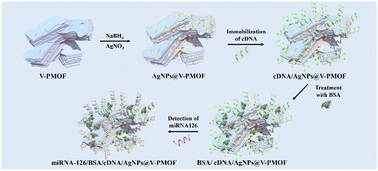
J. Mater. Chem. B, 2023,11, 8657-8665
https://doi.org/10.1039/D3TB01380D
Insights into the antimicrobial properties of a cationic steroid and antibiofilm performance in PDMS-based coatings to potentially treat urinary infections
Currently, multidrug-resistant (MDR) infections are one of the most important threats, driving the search for new antimicrobial compounds.
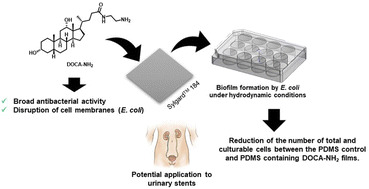
J. Mater. Chem. B, 2023,11, 8697-8716
https://doi.org/10.1039/D3TB01185B
Construction of an electrochemical–fluorescent dual-mode sensor with a dual-mode signal AgNC probe synthesized from cytosine-rich DNA for OTA detection
An electrochemical–fluorescent bimodal sensor was successfully constructed by using a DNA–AgNCs signal tag with both electrochemical and fluorescent signals combined with a magnetic separation strategy.

J. Mater. Chem. B, 2023,11, 8679-8688
https://doi.org/10.1039/D3TB01520C
Hydrogen-bonded organic framework-stabilized charge transfer cocrystals for NIR-II photothermal cancer therapy
Within hydrogen-bonded organic frameworks (HOFs), the stabilized charge transfer cocrystals, named TQC@PFC-1, exhibit high photothermal conversion efficiency in the NIR II region for photothermal therapy in both in vitro and in vivo settings.
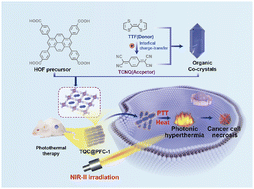
J. Mater. Chem. B, 2023,11, 8649-8656
https://doi.org/10.1039/D3TB01475D
A robust yet simple method to generate fluorescent amyloid nanofibers
This work illustrates a new method for preparing fluorescent amyloid nanofibers. The strategic fabrication mentioned in the study is highly relevant to the advancement of both fundamental and applied research in biological and materials sciences.

J. Mater. Chem. B, 2023,11, 8765-8774
https://doi.org/10.1039/D3TB01203D
Plasmonic alloys for quantitative determination and reaction monitoring of biothiols
Plasmonic alloys were designed to assist the laser desorption/ionization process in mass spectrometry, for quantitative determination and reaction monitoring of biothiols.

J. Mater. Chem. B, 2023,11, 8639-8648
https://doi.org/10.1039/D3TB01076G
Polymer–nucleobase composites for chemotherapy drug capture
Intravenous chemotherapy is standard treatment for many cancers but also produces off-target toxicity. We developed polymer–nucleobase composites that can capture chemotherapy drugs, potentially enabling endovascular devices to reduce side effects.
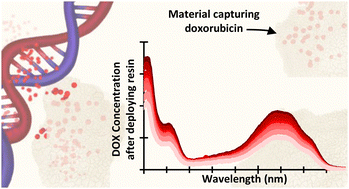
J. Mater. Chem. B, 2023,11, 8449-8455
https://doi.org/10.1039/D3TB00819C
NIR-II fluorescence and PA imaging guided activation of STING pathway in photothermal therapy for boosting cancer immunotherapy by theranostic thermosensitive liposomes
A versatile PLDD was developed with the light-triggered promotion of anti-tumor immunity and NIR-II fluorescence and PA imaging profiles, soaring the therapeutic effect and providing accurate spatiotemporal imaging for photothermal immunotherapy.
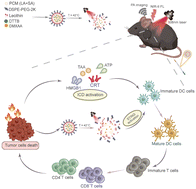
J. Mater. Chem. B, 2023,11, 8528-8540
https://doi.org/10.1039/D3TB00711A
Smart design of a therapeutic nanoplatform for mitochondria-targeted copper-depletion therapy combined with chemotherapy
A mitochondria-targeted nanoplatform is developed to deplete intracellular copper ions and deliver DOX, consequently achieving prominent efficiency in tumor treatment with a combined copper-depletion therapy and DOX-mediated chemotherapy method.
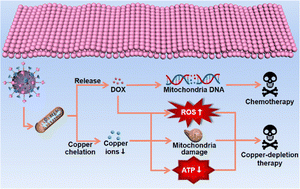
J. Mater. Chem. B, 2023,11, 8433-8448
https://doi.org/10.1039/D3TB00979C
3D printing-mediated microporous starch hydrogels for wound hemostasis
3D printing-mediated microporous starch hydrogels loaded with Ca2+ coagulation factor showed great hemostatic performance and stimulation of wound healing.
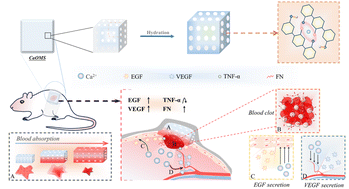
J. Mater. Chem. B, 2023,11, 8411-8421
https://doi.org/10.1039/D3TB01189E
A sustainable one-pot method to transform seashell waste calcium carbonate to osteoinductive hydroxyapatite micro-nanoparticles
A straightforward, one-pot, low-temperature hydrothermal method has been set up to transform calcium carbonate particles from oyster shell waste into hydroxyapatite micro/nanoparticles with osteoinductive properties.

J. Mater. Chem. B, 2023,11, 7766-7777
https://doi.org/10.1039/D3TB00856H
Quaternized carbon dots with enhanced antimicrobial ability towards Gram-negative bacteria for the treatment of acute peritonitis caused by E. coli
Quaternized carbon dots prepared from citric acid and diallyl dimethyl ammonium chloride exhibit enhanced antibacterial activity against Gram-negative bacteria for the effective treating acute peritonitis with E. coli infection via injection.
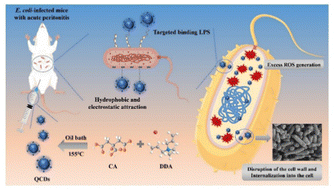
J. Mater. Chem. B, 2023,11, 7696-7706
https://doi.org/10.1039/D3TB00889D
A nanoscale inorganic coating strategy for stabilizing hydrogel neural probes in vivo
Hydrogels with adaptable optical and mechanical characteristics show considerable promise for light delivery in vivo with neuroengineering applications.

J. Mater. Chem. B, 2023,11, 7629-7640
https://doi.org/10.1039/D3TB00710C
Unveiling the mechanisms behind surface degradation of dental resin composites in simulated oral environments
Degradation behavior of dental composites in oral environments simulating gastroesophageal reflux was analysed. Further, thermodynamic and quantitative analyses of the composites uncovered their aqueous stabilities and degradation mechanisms.

J. Mater. Chem. B, 2023,11, 7707-7720
https://doi.org/10.1039/D3TB00756A
Targeted treatment of gouty arthritis by biomineralized metallic nanozyme-mediated oxidative stress-mitigating nanotherapy
Targeted delivery of ceria nanozymes depletes oxidative stress in inflammatory macrophage cells and alleviates gouty arthritis symptoms by suppressing inflammatory signals.
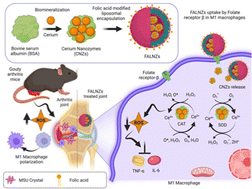
J. Mater. Chem. B, 2023,11, 7684-7695
https://doi.org/10.1039/D3TB00669G
Mn(II) complex impregnated porous silica nanoparticles as Zn(II)-responsive “Smart” MRI contrast agent for pancreas imaging
Mn(II)-based porous silica nanoparticle encapsulated Zn(II)-responsive MRI contrast agent has been investigated to examine the pathological condition of pancreatic β-cells whose functional efficiency is related to type-1 and type-2 diabetes mellitus.
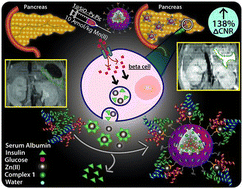
J. Mater. Chem. B, 2023,11, 8251-8261
https://doi.org/10.1039/D3TB01289A
3D printable, injectable amyloid-based composite hydrogel of bovine serum albumin and aloe vera for rapid diabetic wound healing
Protein-based biomaterials, particularly amyloids, have sparked considerable scientific interest in recent years due to their exceptional mechanical strength, excellent biocompatibility and bioactivity.

J. Mater. Chem. B, 2023,11, 8142-8158
https://doi.org/10.1039/D3TB01151H
About this collection
2023 marked the 10th anniversary year of the Journal of Materials Chemistry A, B and C. To celebrate, we have highlighted some of the authors who have published for the first time in these journals during the anniversary year.
This collection showcases a selection of articles that have been published by corresponding authors for the first time in Journal of Materials Chemistry B in 2023.
Thank you to these authors for choosing to publish with the journal!
Check out these companion collections: